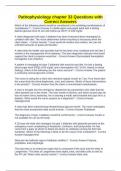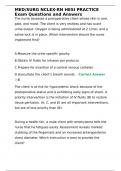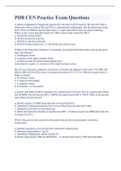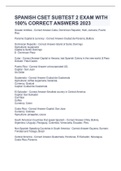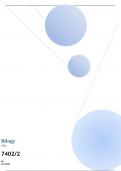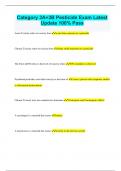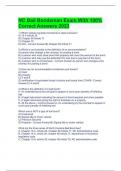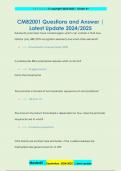Exam (elaborations)
Pathophysiology chapter 33 Questions with Correct Answers
- Course
- Institution
Pathophysiology chapter 33 Questions with Correct Answers Which of the following clients would be considered to be exhibiting manifestations of "prediabetes"? - Correct Answer A middle-aged overweight adult with a fasting plasma glucose level of 122 with follow-up OGTT of 189 mg/dL. A client di...
[Show more]
